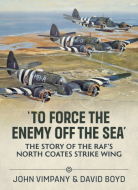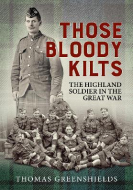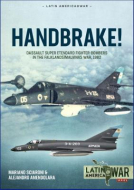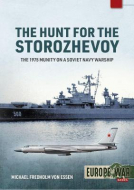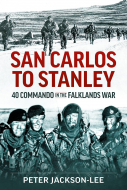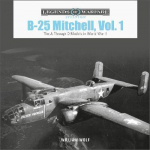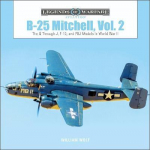
- Agriculture
- Architecture & Design
- Arts & Photography
- Biography
- Business
- Calendars and Diaries
- Childrens (All)
- Childrens (Illustrated)
- Childrens (Picture flats)
- Childrens (Te Reo)
- Classics
- Cooking, Food & Drink
- Craft & Hobbies
- Design (Art / Graphics)
- Design (Interiors)
- Education
- Fashion
- Fiction & Literature
- Fiction - Young Adult
- Gift Ideas
- Health & Wellbeing
- History
- Home & Garden
- Humour & Gift
- Instead of a Card Poems
- Military
- Music
- New Zealand
- NZ (History)
- NZ (Landscapes)
- NZ (Pictorial)
- Poetry
- Reference
- Religion & Faith
- Science & Nature
- Sport & Recreation
- Stationery
- Taschen : 40th Anniversary Edition
- Taschen : BA Basic Art
- Taschen : BU Bibliotheca Universalis
- Te Reo Māori
- Transport
- Travel
June / July 2022 (126)
|
To Force The Enemy Off The Sea
ISBN: 9781804510858 Author: John Vimpany Publisher: Helion & Company This is the story of the RAF anti-shipping Strike Wing based at North Coates in Lincolnshire, whose Beaufighters from 1943 attacked heavily defended German conv... This is the story of the RAF anti-shipping Strike Wing based at North Coates in Lincolnshire, whose Beaufighters from 1943 attacked heavily defended German convoys transporting raw materials to Rotterdam. During a little-known but hard-fought two-year campaign, the Wing succeeded in forcing the enemy's ships off the sea. From the outset of the Second World War, it was clear that the supply of raw materials, in particular high grade iron ore from Scandinavia, would form a crucial element in Germany's ability to maintain its armaments production. It was not until early 1943, however, after three years of heavy losses of aircraft and crews, that the RAF implemented an effective offensive capability against the heavily defended shipping convoys carrying iron ore and other raw materials into German-controlled ports. This volume sets out the strategic challenge the RAF faced in the North Sea and describes the piecemeal and costly response effected during the first three years of the conflict when other threats and theatres claimed a higher strategic priority. It also explains changes in strategy and tactics introduced through the course of 1942 and chronicles many of the big Strikes and other operations launched by North Coates from April 1943 onwards. Moreover, the 'balance sheet', examination of the anti-shipping campaign performance in general, and the North Coates Strike Wing in particular – vessels sunk, crews lost and the wider strategic impact are examined. Most controversially, the authors suggest that Britain missed an important strategic opportunity in 1942. A larger, earlier deployment of Strike Wings, diverting even a small proportion of the enormous resources allocated to Bomber Command's bombing of German cities, might have had a greater impact on the Third Reich's industrial production and with fewer aircrew losses and none of the moral ambiguity associated with that controversial campaign. Bind: hardback Pages: 142 Dimensions: 180 x 248 mm Publication Date: 17-05-2022 |
$55.00 |
|
|
Those Bloody Kilts
ISBN: 9781915113085 Author: Thomas Greenshields Publisher: Helion & Company The book is the first to examine comprehensively the experience of the Highland soldier in the Great War, seeking the truth behind the myths. It does not deal w... The book is the first to examine comprehensively the experience of the Highland soldier in the Great War, seeking the truth behind the myths. It does not deal with the operational history, but with the life and character of the Highland soldier. It involves a far more comprehensive search of the original sources than previously attempted, being based on the original letters, diaries and accounts of serving soldiers and officers, principally from the Imperial War Museum, the Liddle Collection, the National Library of Scotland and the Regimental Museums, which together provide great richness of personal detail. Much work on Highland soldiers, and almost all popular work, has perpetuated myths about their unique character and martial spirit. This book critically examines such mythology and offers new insights into the practicality of the kilt, the use of the pipes, identity and morale, and frank revelations about courage, nerves, shell-shock and failure and the ruthless use of the bayonet. The whole is evidence based and scholastically sound, but nevertheless thoroughly readable and accessible to the general reader. The book reviews the Highland regiments before the declaration of war in 1914, including the kilted regiments not only of Scotland, but of England and the Empire. This includes an examination of their nature, composition, recent battle experience in South Africa and the Empire, sense of identity, public image and reputation. It then reviews the Highland battalions which actually went to war, including not only the pre-war Regular and Territorial battalions, but also the additional Territorial, Service, Garrison and Reserve battalions raised in the United Kingdom, together with the battalions raised for war service in Canada and South Africa. Specifically, it examines their composition, including Gaelic speakers, non-Highland Scots, recruits from the other home countries, including England, from the Empire and from foreign countries. It examines how composition varied between Regular, Territorial and Kitchener battalions etc, and how it changed with huge losses, replacement drafts and the introduction of conscription. It further examines the background of both officers and men and the reasons why they specifically joined Highland regiments. The book briefly describes the evolution of the Highland uniform during the war. More particularly, it examines the experience of the Highland soldier wearing the kilt, including its attraction for recruits, their first introduction to the kilt, regulations, custom and tradition for wearing the kilt, delays in issuing the kilt, the issue of khaki kilts, opinions of the kilt, self-image, pride and identity. It also considers its attractiveness to the ladies, the French and others, and the practicalities, risks and challenges of wearing it at home and behind the lines. It goes on to consider the practicality of the kilt at war, including exposure to cold, wet and mud, and the problems of lice, mosquitoes, barbed wire, easy recognition and mustard gas. It also considers attempts to alleviate these difficulties, for example through the temporary issue of trousers, or through proposals for abolishing the kilt in the trenches. In addition, it investigates soldiers' opinions of the kilt at war. One chapter considers how the pipes were actually used in training, in battle and behind the lines. It demonstrates how, while on occasion the pipes were still used to pipe troops into battle, increasingly they were held back from the battle itself and used principally to boost morale behind the lines. It also investigates what the soldiers actually thought of the pipes, and the ways in which they contributed to morale, including both the reinforcement of identity and the emotional and stirring impact of the music itself. The book examines the way that discipline and inter-personal relations actually worked in the Highland battalions. It examines the exercise of discipline, and the relationships between officers, N.C.O.'s and men to see if there is any evidence at all for a more informal style of discipline and a distinctive 'family character' in the Highland battalions, as frequently claimed. It also examines the personal relationships between the men, formed amongst small units (sections), groups of pals and between particular pals, identifying the support mechanisms used to maintain morale in the face of adversity. It relates these 'low level' support mechanisms to support from home, the hierarchical relationships discussed above, and the overarching support provided by the battalion and regiment, to build a model of the way in which mutually reinforcing support mechanisms contributed to the maintenance of morale. It also considers identity and self-image, including identity as Highland soldiers, as members of individual regiments and battalions, and as Scots, and relates these elements to a model of the way morale worked. It includes a consideration of the extent to which specific customs and traditions were observed in the Highland battalions. The book considers the behavior of the Highland soldier in battle, looking at their reputation for ferocity, the cult of the bayonet, their attitude towards the Germans, the taking or otherwise of prisoners and evidence for their treatment. It also looks at their reputation for courage, considering examples of courage alongside other examples of nerves, shell-shock and, on occasion, failure. The final chapter brings together the strands discussed in the preceding chapters, and seeks to identify what, if anything, truly made the Highland soldier unique, and to what extent his experience was simply the same as that of the ordinary Tommy. Bind: paperback Pages: 536 Dimensions: 171 x 248 mm Publication Date: 15-04-2022 |
$79.99 |
|
|
90 Years of the Indian Air Force
ISBN: 9781915070586 Author: Sanjay Badri-Maharaj Publisher: Helion & Company The Indian Air Force was formed on 8 October 1932. Tested in the Second World War and in subsequent India-Pakistan conflicts, the force enters its 90th year as ... The Indian Air Force was formed on 8 October 1932. Tested in the Second World War and in subsequent India-Pakistan conflicts, the force enters its 90th year as one of the largest air forces in the world. However, it also faces enhanced challenges in the region as it seeks to replace legacy systems, upgrade its combat and support assets and to also expand its force levels. Despite many problems the IAF is facing the second decade of the 21st century with an increasingly rationalized doctrine, an improving air defense network, an array of new ordnance and electronics and a rejuvenated combat fleet. 90 Years of the Indian Air Force examines the Indian Air Force as it exists today and its moves towards modernization. Each element of the IAF, along with the current inventory of aircraft as they relate to its combat squadrons, its transport fleet, its helicopter forces and its training and electronic warfare and surveillance assets are discussed. In addition, the IAF's air defence network and its large SAM inventory are detailed along with the fledgling Defence Space Agency which operates with Air Force assistance. India's existing space assets are discussed as they relate to airspace surveillance and management. The ongoing modernization of the Indian Air Force is examined in terms of new acquisitions and the upgrading of older but viable platforms. Similarly, the ongoing efforts to improve the Air Defence network, ISTAR systems, AEW platforms and new SAMs are analyzed. Moreover, the focus on indigenous designs in respect of radars, aircraft, ordnance and SAMs are explored in detail. Two separate elements of this effort are discussed - license production of foreign designs and a renewed emphasis on local designs for combat aircraft, trainers, helicopters, weapons and SAM, this local production being key to the IAF's future modernization. Bind: paperback Pages: 80 Dimensions: 210 x 298 mm Publication Date: 16-06-2022 |
$49.99 |
|
|
Handbrake
ISBN: 9781915070722 Author: Mariano Sciaroni Publisher: Helion & Company "Handbrake!" the codeword that was shouted aboard Royal Navy ships upon the detection of an emission from the Thomson-CSF/EMD Agave radar of the Argentine Super... "Handbrake!" the codeword that was shouted aboard Royal Navy ships upon the detection of an emission from the Thomson-CSF/EMD Agave radar of the Argentine Super Étendard, which carried the dreaded AM-39 Exocet missiles. Argentina had bought these aircraft and their weapons from France in 1980, assigning them to the re- established 2nd Naval Air Fighter and Attack Squadron. Like most Argentine military units, the 1982 conflict over the Falklands/Malvinas conflict surprised the squadron, which was in the process of incorporating the aircraft and missiles, arriving only a few weeks beforehand from France. Hastily, under the leadership of its commander, Capitán de Fragata Jorge Luis Colombo, the squadron finished its training and developed tactics for anti-ship attacks, deploying to the south of Argentina. The effort paid off. With just four aircraft, five missiles, and ten pilots, the squadron succeeded in sinking HMS Sheffield and the container ship Atlantic Conveyor and conducted a long range and dangerous mission against the Carrier Battle Group on 30 May 1982. Using declassified Argentine and British documentation, as well as interviewing pilots and technicians (French and Argentine) this book details, as never before, the history of this elite military unit from 1980 to the present, with a focus on the 1982 conflict over the Falklands/Malvinas, and the five missions flown. It is the story of a military unit that revolutionized modern naval warfare, addressing both the military equipment involved and the people who were there. Known as the Lora (after the squadron badge showing a female parrot armed with a club), the squadron terrorised British sailors in the South Atlantic and is still in service with the Naval Aviation of the Argentine Navy. Bind: paperback Pages: 88 Dimensions: 210 x 298 mm Publication Date: 16-06-2022 |
$55.00 |
|
|
The Hunt For The Storozhevoy
ISBN: 9781915070708 Author: Michael Fredholm Von Essen Publisher: Helion & Company In 1975, Lieutenant Commander Valeriy Sablin led his crew in a mutiny on the Soviet warship Storozhevoy. The ship was then located in Riga, Soviet Latvia. Sabli... In 1975, Lieutenant Commander Valeriy Sablin led his crew in a mutiny on the Soviet warship Storozhevoy. The ship was then located in Riga, Soviet Latvia. Sablin's avowed intention was to foment a new communist revolution by taking the warship to Leningrad, where he expected to receive the support of the navy and the masses. However, the Soviet leadership thought that Sablin intended to defect to Sweden, bringing with him a warship of modern design with all its armaments, electronics, communication devices, and code books. As a result, Soviet supreme leader Leonid Brezhnev ordered the destruction of the warship. After several dramatic, but ultimately failed, attacks on the Storozhevoy, Colonel General Sergey Gulyayev, commander of the Naval Aviation of the Baltic Fleet, personally ordered a missile launch against the Storozhevoy, employing the special protocol for the launch of nuclear missiles. The purpose of the launch was to destroy the warship. However, by then the crew had already detained Sablin and announced their intention to surrender. The air crews did not know this; however, their commanding officer, Colonel Arkhip Savinkov, never launched the missile, instead faking a radar malfunction. The mutiny was over. Due to the very serious implications of the suppressed mutiny, and the difficulties in finding and attacking the Storozhevoy, which showed that the combat readiness of the Soviet armed forces was less than desired, the participating air crews were ordered to destroy any documentation of the incident and keep quiet about what had happened. As a result, not even the KGB could later piece together all events of the incident, nor is there information in Soviet archives on all the actions taken. For much of the mutiny, the Soviet Navy did not even know the correct location of the Storozhevoy. However, the Swedish SIGINT service monitored the entire incident in real time. The Swedish SIGINT reporting enables a detailed, blow-by-blow description of the events. Being real-time intercepts, the reporting is a far more trustworthy source than the later, often embellished accounts previously published. For this reason, the book offers a detailed and authoritative account of the mutiny based on the SIGINT reporting, with supporting evidence from other surviving sources, together with an account of how Western intelligence interpreted and handled the reporting. Bind: paperback Pages: 58 Dimensions: 210 x 298 mm Publication Date: 31-05-2022 |
$49.99 |
|
|
San Carlos To Stanley
ISBN: 9781915070890 Author: Peter Jackson-Lee Publisher: Helion & Company San Carlos to Stanley is the first history of 40 Commando in the Falklands and dispels the belief that their only role was to look after the beachhead during th... San Carlos to Stanley is the first history of 40 Commando in the Falklands and dispels the belief that their only role was to look after the beachhead during this conflict. Commadore Clapp requested the men of 40 Commando remain at San Carlos as he knew he could trust them to defend his vital anchorage against Argentine counterattack from West Falkland, without which there could be no advance. Initially tasked to fly to the Falklands as tension heightened prior to the Argentine invasion, A Company, 40 Commando eventually left the UK onboard HMS Hermes ahead of the main task force. After the Sir Tristram and Sir Galahad tragedy, A and C Companies, 40 Commando replaced the Welsh Guards' losses and moved forward with that battalion to be the reserve force for the Scots Guards' attack on Mount Tumbledown and the 1/7 Gurkhas attack on Mount William. Men of 40 Commando were involved in the only daylight helicopter assault of the Falklands conflict, against an Argentine position on Sapper Hill, and if the Argentines had not surrendered and all British movements stopped, C Company followed by A Company would have been first to reach Stanley. San Carlos to Stanley has many personal accounts from officers and men of 40 Commando including the Ajax Bay and San Carlos bombing which resulted in numerous casualties including two fatalities. Bind: paperback Pages: 170 Dimensions: 152 x 229 mm Publication Date: 01-05-2022 |
$49.99 |
|
|
B-25 Mitchell Vol 1
ISBN: 9780764363412 Author: William Wolf Publisher: Schiffer Books The North American B-25 Mitchell is WWIIs most heralded and versatile medium bomber. Volume 1 (of two) gives the reader a concise illustrated look at the A thro... The North American B-25 Mitchell is WWIIs most heralded and versatile medium bomber. Volume 1 (of two) gives the reader a concise illustrated look at the A through D models and follows the bombers genesis from the formation of the North American Company and its early steps toward the development of the NA-40, the first B-25. The continued evolution of the Mitchell from the A, B, C, and finally to the iconic D models is described in vintage photos. The production at the parent Inglewood, California, plant and then the Kansas City plant is illustrated, as are the important modification centres. The last half of the book covers the D model in many colour photos of the interior and exterior, from nose to tail and from wingtip to wingtip. The Wright R-2600 radial engine and Hamilton-Standard propeller are detailed, as are their associated systems. The Mitchells markings and insignia changes are featured throughout. Bind: hardback Pages: 112 Dimensions: 229 x 229 mm Publication Date: 28-06-2022 |
$45.00 |
|
|
B-25 Mitchell Vol 2
ISBN: 9780764363429 Author: William Wolf Publisher: Schiffer Books This second of two volumes on the North American B-25 Mitchell covers the late-WWII G through J, F-10, and PBJ variants of the famed US medium bomber. Among the... This second of two volumes on the North American B-25 Mitchell covers the late-WWII G through J, F-10, and PBJ variants of the famed US medium bomber. Among the many topics discussed are the Mitchell versions used by the US Navy and Marine Corps, as well as photo-recon and experimental types. B-25s in foreign wartime service are also shown, included those used in Poland, France, England, and Soviet Russia. A detailed chapter covers all types of armament used in the Mitchell, from guns and cannon of various calibers to ammunition used, including machine gun rounds, rockets, and bombs. A special section of the book features discussions on unique B-25 missions, events, and aircrew during WWII and in the postwar era, such as the April 1942 Doolittle Raid, and the B-25 collision with the Empire State Building in July 1945. B-25 appearances in classic feature films such as Thirty Seconds over Tokyo and Catch-22 are also detailed. Bind: hardback Pages: 112 Dimensions: 229 x 229 mm Publication Date: 28-07-2022 |
$45.00 |
|
|
Boeing 707
ISBN: 9780764363450 Author: Wolfgang Borgmann Publisher: Schiffer Books Beginning in the late 1950s, the Boeing 707 revolutionized passenger aviation like almost no other aircraft, as the elegant four-engine aircraft made it possibl... Beginning in the late 1950s, the Boeing 707 revolutionized passenger aviation like almost no other aircraft, as the elegant four-engine aircraft made it possible to serve intercontinental long-haul routes quickly and economically. This volume in the Legends of Flight series examines the history of this classic jet aircraft, whose memorable design has survived to this day, its basic features still recognizable in the Boeing 737. The history of 707 operations is presented in detail, as is the use of the type by various world military forces and governments-and its famed use as the US presidential Air Force One in the 1960s through the 1980s. Its use by many of the world's most famous airlines, including American, TWA, Pan Am, Northwest, Continental, Air France, British Airways, Lufthansa, Cathay Pacific, and Air India, is also covered. Technical specifications for the 707, the Dash 80 prototype, the Boeing 720 (derived from the 707), the aerial refueler KC-135, and E-3 Sentry, as well as contemporaneous photographs, bring to life the fascinating history of Boeing's first commercial jetliner. Bind: hardback Pages: 144 Dimensions: 229 x 229 mm Publication Date: 14-06-2022 |
$65.00 |
|
|
Boeing 757
ISBN: 9780764363467 Author: Dan Dornseif Publisher: Schiffer Books First flown in 1982, the Boeing 757 was an impressive accomplishment. The aircraft was fast, quiet, and fuel efficient while still exhibiting stellar takeoff, c... First flown in 1982, the Boeing 757 was an impressive accomplishment. The aircraft was fast, quiet, and fuel efficient while still exhibiting stellar takeoff, climb, and landing performance. Hear firsthand accounts from the leaders of the 757 program who skillfully established an extraordinary culture within their organization. This team, empowered by the program's expert guidance, overcame the challenges of producing a new aircraft type in an environment that was fast paced and unforgiving. It was originally designed as a domestic aircraft, and the 757's performance, along with the advent of twin-engine overwater authorizations, led it to become one of the primary aircraft conducting long-range overwater operations. To place the reader in the pilot's seat, a technical chapter is also included, describing the airplane's systems and actual handling of the airplane. Learn about this special aircraft and the people who designed, built, marketed, and flew it. Bind: hardback Pages: 160 Dimensions: 229 x 229 mm Publication Date: 14-06-2022 |
$65.00 |


